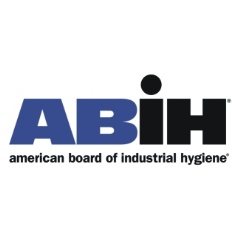Protecting Workers and the Public from Lead Poisoning Exposure Risks
The American Board of Industrial Hygiene® (ABIH®) reminds workers, industry and the public of the need to address lead exposure hazards.
Both occupational exposure and non-occupational exposure to lead are within the area of expertise for many in the industrial hygiene profession.
This summer, the Portland Press Herald published a series of articles entitled, “Federal law to prevent lead poisoning goes largely unenforced.” The article discusses the 2010 Lead Renovation, Repair and Painting Rule that is meant to protect the public and workers from lead and lead dust hazards associated with activities dealing with lead-based paints.
The investigative report states that the New England office of the Environmental Protection Agency (EPA) and other EPA offices across the country do not have enough staff to enforce the law. Sharon Hayes, manager of the toxics and pesticides program for the regional EPA office is quoted as saying, “This is absolutely a national problem, there’s not enough resources to do it adequately.”
Lead was used in many paints up until the late 1970s. As these paints deteriorate or are disturbed, they can pose a health risk to people. Exposure to lead can affect almost every organ and system in the body according to the EPA. Children are particularly sensitive to exposure and the damage caused by lead poisoning.
“Both occupational exposure and non-occupational exposure to lead are within the area of expertise for many in the industrial hygiene profession,” said Nicole Greeson, CIH® and Chair of ABIH®. “The acute and chronic health effects of lead exposure have been studied for many years. This recent article brings to light the need for people and industry to be aware of this public health threat that continues to be an issue for workers and the general public. Whether exposure risks are from lead-based paints or due to other sources, Certified Industrial Hygienists® are uniquely qualified to help identify and manage lead exposure risks in the workplace and in communities. CIHs are trained and experienced in workplace assessments, community exposure, air sampling, toxicology, risk analysis, hazard communication and engineering controls. These and other areas of expertise required to become a CIH® are critical for their ability to establish or maintain a safe and healthy work environment and to protect the public from lead hazards.”
To learn more about the American Board of Industrial Hygiene®, Certified Industrial Hygienist® credential or to locate a CIH® to perform industrial hygiene services, please visit www.ABIH.org, email abih@ABIH.org or call (517) 321-2638.
About the American Board of Industrial Hygiene ®
Since 1960, ABIH®, a not-for-profit corporation, has been the world’s largest, premier organization for certifying professionals in the practice of industrial hygiene. ABIH® is responsible for ensuring high-quality certification including education, experience, examination, certification maintenance and ethics enforcement. Currently, more than 6800 people are certified to use the CIH® designation.
( Press Release Image: https://photos.webwire.com/prmedia/12710/200423/200423-1.jpg )
WebWireID200423
- Contact Information
- Paul Cochrane
- President
- Cochrane & Associates, LLC
- Contact via E-mail
This news content may be integrated into any legitimate news gathering and publishing effort. Linking is permitted.
News Release Distribution and Press Release Distribution Services Provided by WebWire.
